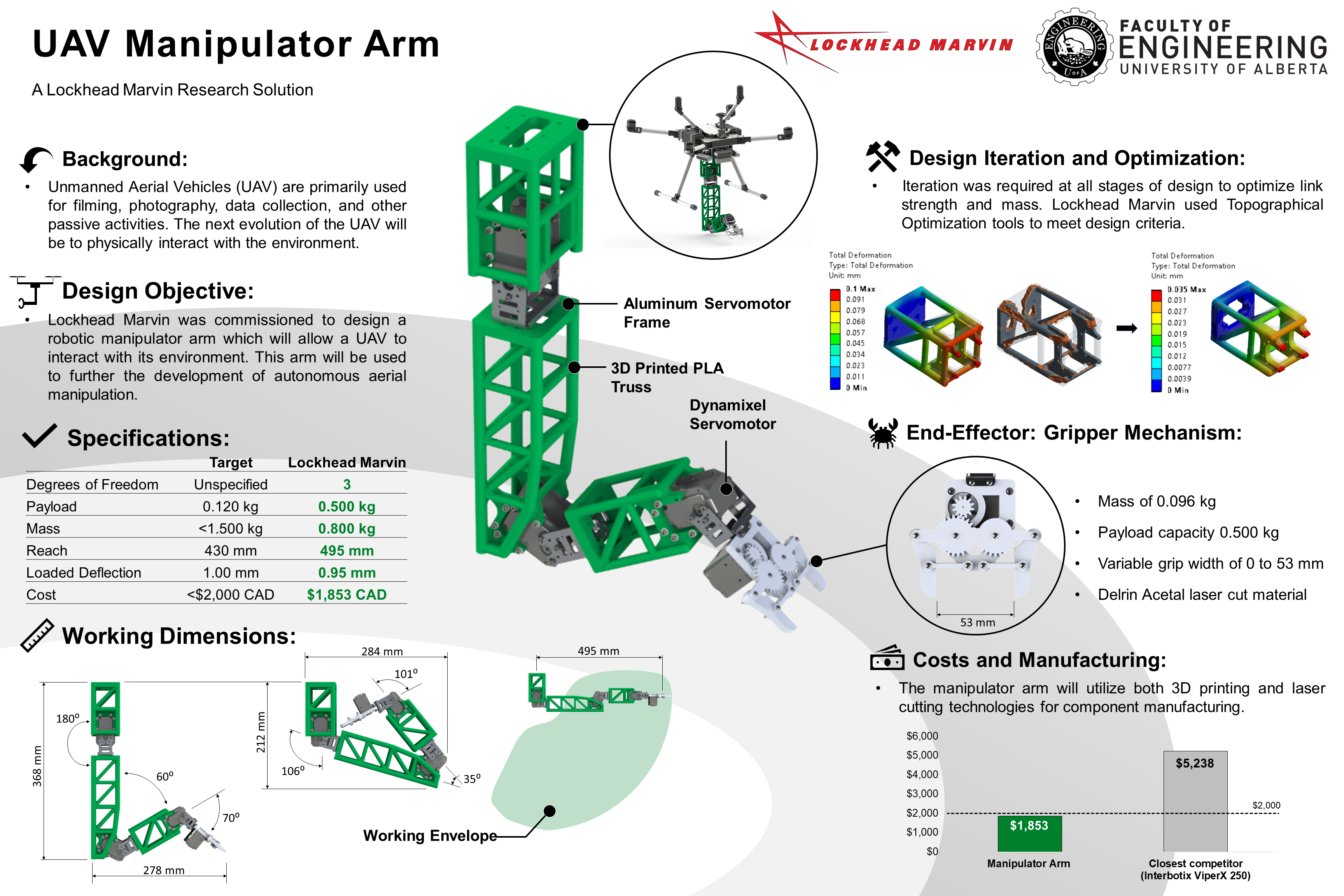Imagine drones that not only fly and capture images but also physically interact with the world around them. Thanks to a brilliant capstone project by a team from the University of Alberta, this vision is now a reality! Winner of the prestigious Thorsten Watterodt Award for Excellence in Design, the UAV Manipulator Arm project is redefining what drones can do.
The Challenge: Moving Beyond Passive Drones
Most UAVs today are used for tasks like photography, data collection, or surveillance. But what if they could do more—like grab objects, perform repairs, or assist in rescue missions? This project’s mission was clear: build a lightweight, cost-effective robotic arm that gives UAVs the power to interact physically with their surroundings. The result? A highly capable manipulator arm that’s efficient, versatile, and affordable.
The Design: Smart, Strong, and Sophisticated
The UAV Manipulator Arm isn’t just functional—it’s a masterpiece of design. Here’s what makes it shine:
- Impressive Specs:
- Degrees of Freedom: 3, for precise movement.
- Payload Capacity: Can lift up to 0.500 kg.
- Reach: A long 495 mm for extended operations.
- Mass: A mere 0.800 kg, perfect for lightweight UAVs.
- Cost: Just $1,853 CAD, less than half the price of its closest competitor, the Interbotix ViperX 250.
- Innovative Materials:
- Frame: Durable aluminum for strength.
- Truss: Lightweight 3D-printed PLA.
- Gripper Mechanism: Made of laser-cut Delrin Acetal, offering variable grip widths (0 to 53 mm).
- High Precision:
- Minimal loaded deflection of just 0.95 mm, ensuring stability and accuracy.
- Dynamixel servomotors for seamless control.
The Process: Engineering Brilliance
How do you turn a great idea into an award-winning design? This team relied on cutting-edge tools and techniques:
- Topographical Optimization: Refined the arm’s structure for strength and weight efficiency.
- Finite Element Analysis: Ensured the arm could handle real-world loads without failure.
- SolidWorks and GD&T: Brought technical precision to the design and manufacturing processes.
To bring the arm to life, the team combined 3D printing and laser cutting. This hybrid manufacturing approach kept costs low while enabling the creation of complex geometries, a hallmark of modern engineering.
Why It Matters: A Leap Forward for UAVs
Compared to its market rivals, the UAV Manipulator Arm is a game-changer:
- Cost-Effective: Less than half the cost of similar solutions.
- Versatile: Capable of advanced tasks, from maintenance to search and rescue.
- Scalable: Designed with producibility and future development in mind.
By enabling UAVs to interact with their environment, this arm opens up exciting possibilities for industries like construction, logistics, and disaster response.
Looking Ahead: The Future of UAV Technology
This project isn’t just about one robotic arm—it’s about the future of UAVs. By pushing boundaries and combining engineering innovation with affordability, the UAV Manipulator Arm lays the groundwork for more ambitious autonomous systems. As drones continue to evolve, expect designs like this to revolutionize industries and inspire the next generation of aerial robotics.
Get ready, because the future of UAVs has officially taken flight! 🚁✨
Winner of the Thorsten Watterodt Award for Excellence in Design
